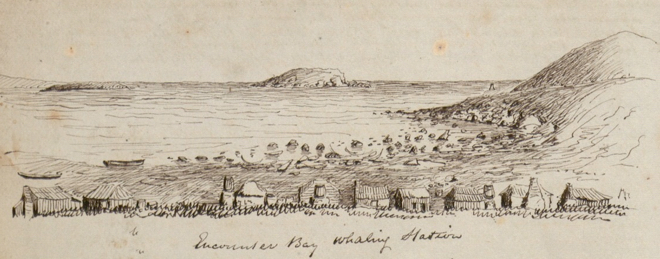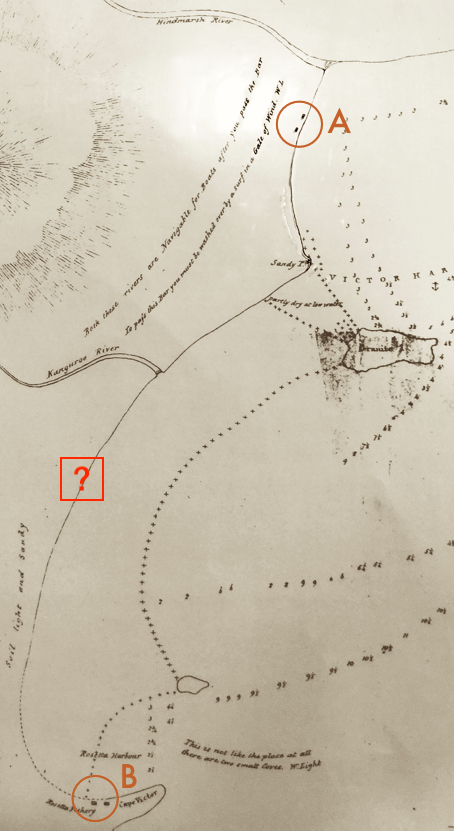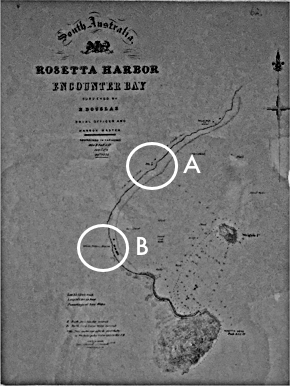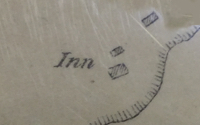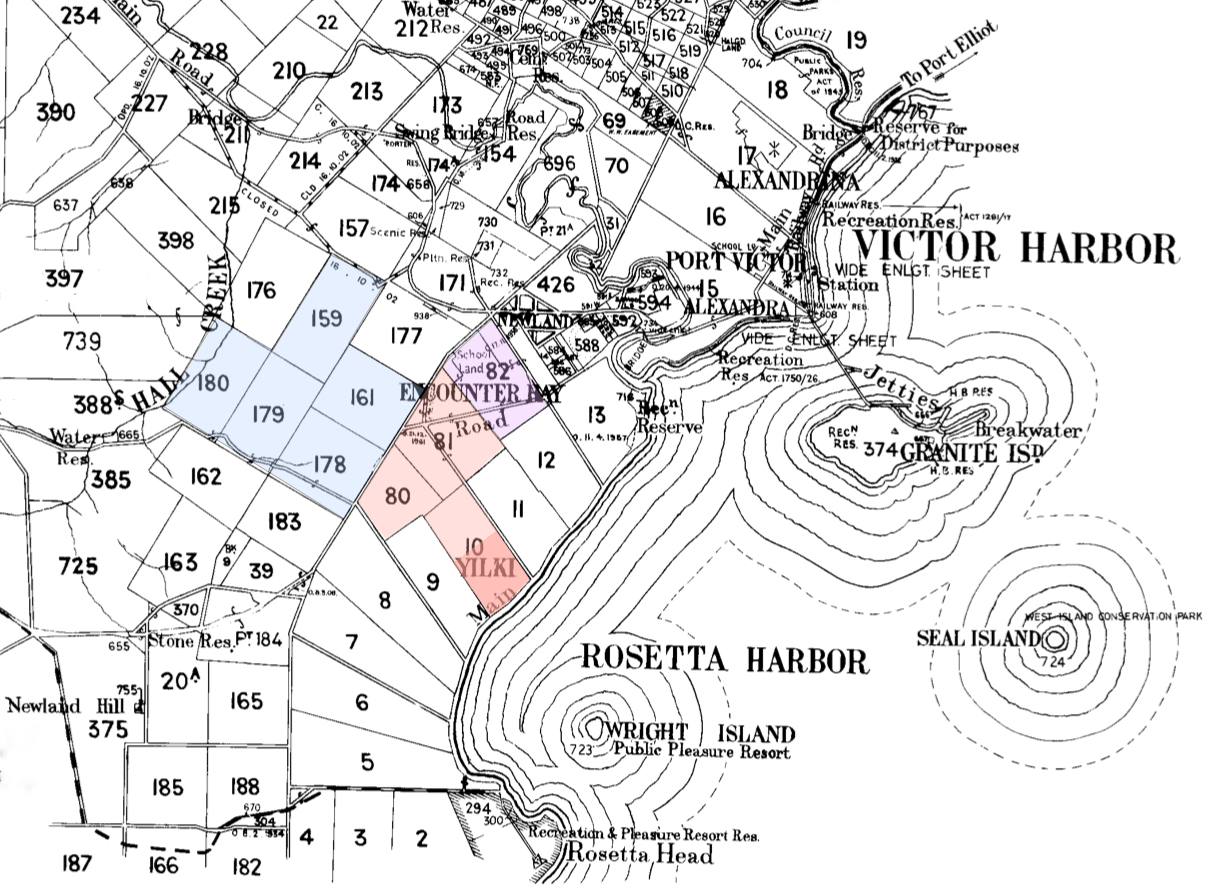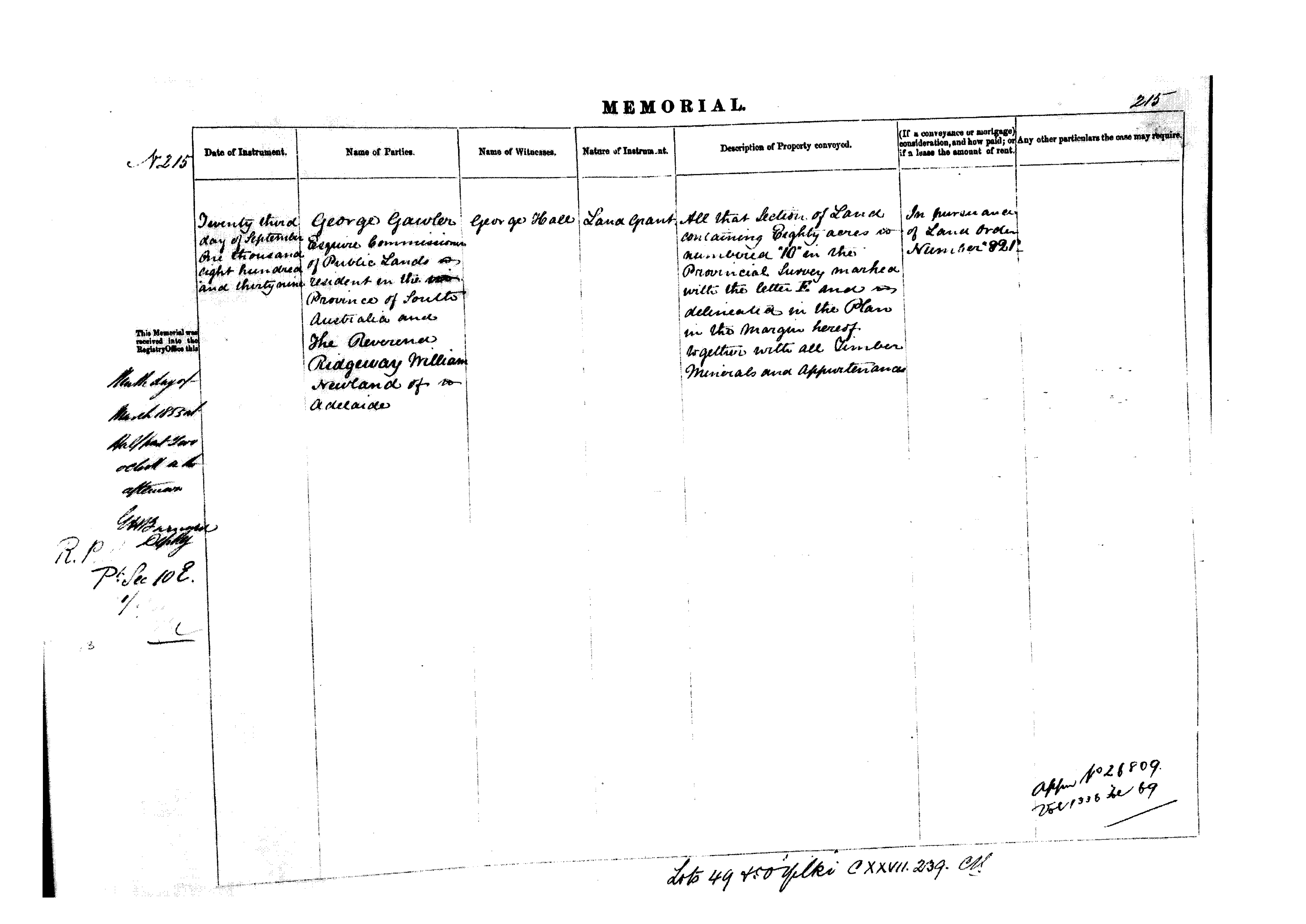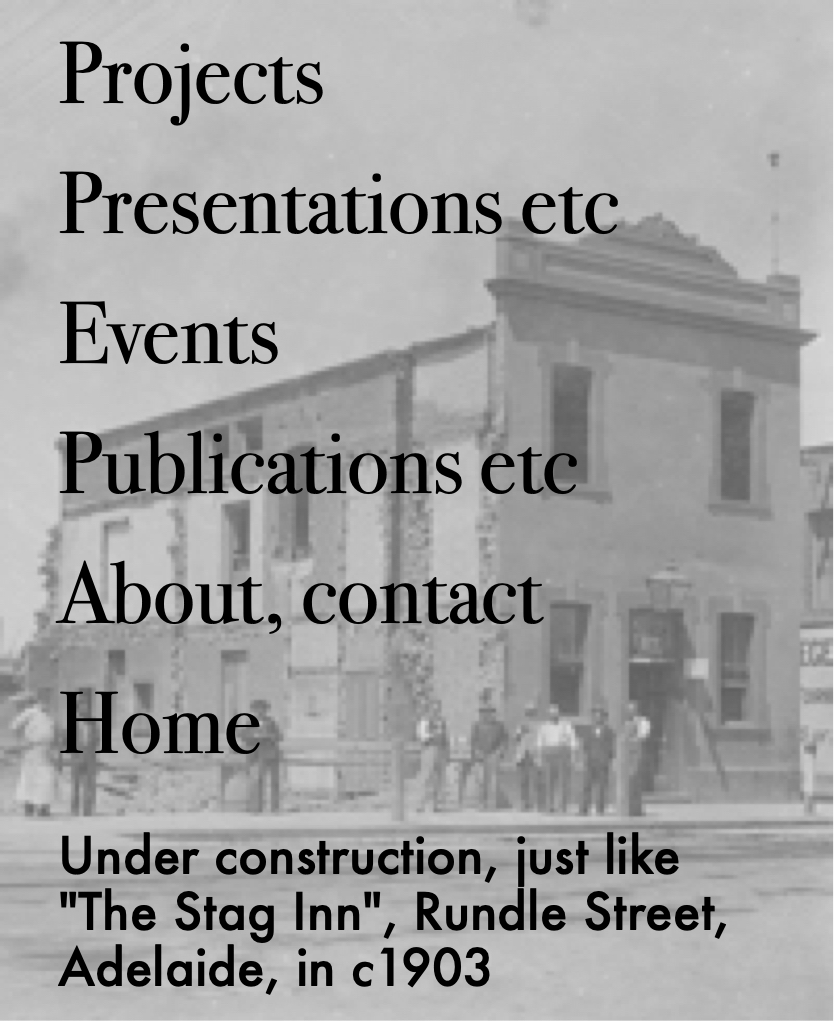
|
The origins of the Ship Inn (Fountain Inn) at Encounter Bay - one of earliest extant pubs in South Australia
In 1918 a correspondent to the Register claimed that the Fountain Inn was "the first inn in South Australia to be licensed" . This was repeated a decade later by octogenarian Robert Sweetman, then, "one of the oldest living residents of Encounter Bay"; according to Sweetman,
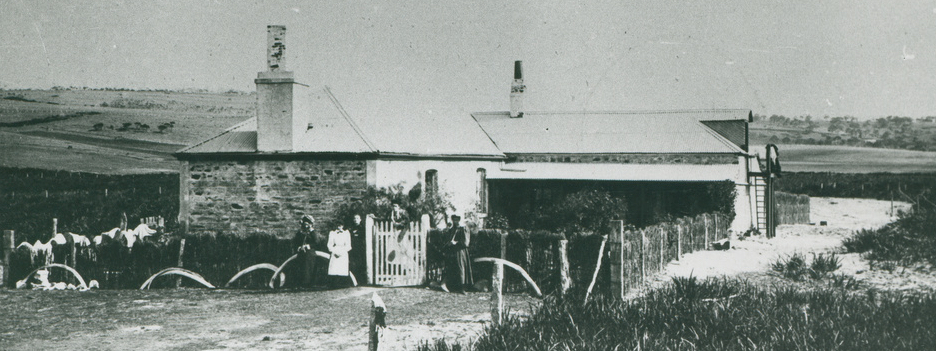 The front of "Yelki", formerly the Fountain Inn, probably c1900 [State Library of South Australia B14442] 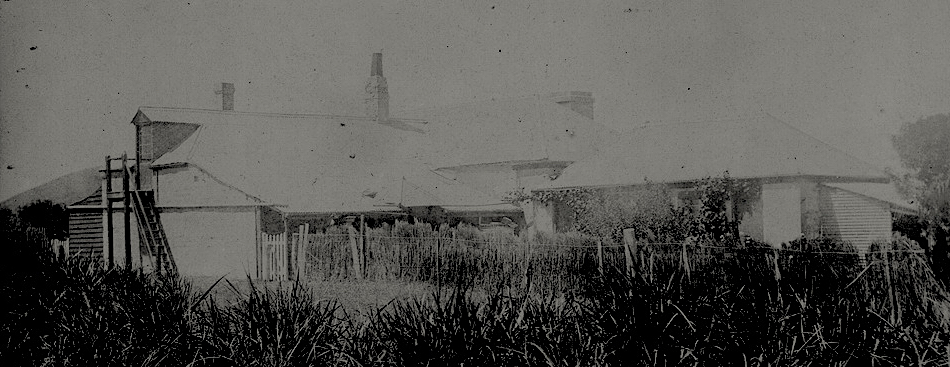 The rear of "Yelki", probably c1900 [poor original]
[State Library of South Australia B16526]
The rear of "Yelki", probably c1900 [poor original]
[State Library of South Australia B16526]
The Ship Inn or Tavern was licensed for two years from September 1840 to March 1842 and the Fountain Inn from September 1847 and was most certainly not the first licensed public house in South Australia. Nor was it likely to have been the site of the first unlicensed 'grog shop' in the South Australia . However it was most certainly the first public house in the Districts of Encounter Bay and of Goolwa, licensed or otherwise, and was probably built at the time Encounter Bay was being proposed as an alternative to Adelaide as the main town in the colony. Several dates, from the early 1830s to 1847, have been proposed for the building of the Ship or Fountain Inn . However, even though he was not born until about 1846 and his family hadn't settled in Encounter Bay until about 1854 , Robert Sweetman's 'recollection' that the Fountain Inn was built in 1837 is more likely to be closer to the date - my best bet is 1839-40 - in which case, the building that was the Fountain Inn would be one of if not the oldest extant public houses in South Australia. Despite these differing opinions on when the Fountain Inn was built, it is generally agreed that the pub was somehow associated with the whale fisheries at Encounter Bay, presumably as a place for whalers to drink. This connection hints at a much more likely date for the pub. Until at least 1837, the Encounter Bay whalers were transient, remaining in the area only during the whaling season from about May until October. According to one account, in the 1830s, Tasmanian and Victorian whalers "had formed semi-permanent bay-whaling stations at Portland, Victoria, and others at Encounter Bay. It appears that these whalers and the Kangaroo Island sealers can be classed with the French and American [ship-based, deep-sea] whalers as mere casual visitors; they made no permanent settlement" and, one could add, no permanent public house. It is unlikely therefore that the Fountain Inn was built before 1837. In March 1837 two separate semi-permanent bay-whaling stations were established at Encounter Bay: that of Captain Blenkinsop where Victor Harbor now stands and also on Granite Island and that of the South Australian Company at 'Rosetta Harbor'; both are shown below on Thomas' chart of the harbours in Encounter Bay, originally surveyed in April 1837 . Over this period, the number of whalers at the Encounter Bay fisheries, the potential customers of any tavern or inn, varied from about 50 to more than 100. In 1838 the South Australian Company whale fishery accounts listed 34 whalers and support staff (1 superintendant, 3 headsmen, 5 steerers, 21 pulling hands, 1 cooper, 1 shipwright, a steward/cook and a tonger) plus 13 who were either dismissed or absconded, for a total of about 50 . For the 1839 season it was estimated that the Encounter Bay fishery comprised a combined total of seventeen boats, representing over 100 whalers although most of these would have been employed only temporarily and few, if any, were permanent residents of Encounter Bay. .
Compared to similar occupations such as shepherds and stockmen, whalers were relatively well remunerated and provisioned, especially with rum . Presumably to set up the stations well before the start of the whaling season, in April 1839 Captain Hart in the brig Rapid and Captain Pullen in the cutter Hero sailed from Launcestion for Encounter Bay with 17 whalers, several other passengers, 150 sheep, 3 horses and 'whaling stores' comprising 3000 broad [timber] palings, 13 tons of flour, 5 casks of sugar, 4 tons of potatoes, 15 chests of tea and a 'tierce'/barrel of tobacco. The stores also included 9 puncheons and 3 hogsheads of rum, totalling approximately 5200 litres . The whalers enjoyed a reputation - probably exaggerated - for raucous behavior, lawlessness and especially for hard drinking . As one 'ancient whaler', James Long, recalled, "I came out here in 1837 in the Isabella [under] Captain Hart... They were lively times, I can tell you. Rum was the great drink, and they [the whalers] did not bother much about watering it." Another eye-witness of the whale fisheries in 1839, 'G.B.W.' (George Blakiston Wilkinson), described the whalers as
Until 1839, the fifty to a hundred or so whalers were the only European inhabitants of Encounter Bay. That changed in mid-1839. In May 1839 the Colonial Land Office advertised land in "District E" - Encounter Bay - "for selection by preliminary proprietors" and, a month later, for general selection . The plan on which the sale was at first based reserved 150 acres for a township, "a part of them two or three miles up a valley out of sight of the sea and the rest of them, not opposite Victor Harbour, but all along the bay from Granite Island towards Rosetta Harbour...[measuring] three miles in length and seventy yards in width" ; this township was never laid out - that was left to private enterprise - but it indicated the colonial government's encouragement of close settlement at Encounter Bay, to relieve land speculation around Adelaide and possibly even as an alternative seat of government. One of the first to purchase land in Encounter Bay, in June 1839, was the independent and 'radical' Congregationalist minister Reverend Ridgway Newland, the "pioneer pastor". In July 1839, Newland and a ready-made community of about 30 settled on Newland's land; sponsored by the Colonial Missionary Society, the group was mostly if not all Congregationalists, mostly if not all from Staffordshire in north-west England and, apart from Newland's extended family and a few friends, included a small number of selected tradesmen and labourers . Perhaps most relevant to the history of the Fountain Inn, the party included William Peacock, a stonemason/builder, and his family. The Newland party was the beginning of a modest but steady stream of farmers to settle permanently in the area. In little more than a year the European population of Encounter Bay quadrupled; according to the Second Report from the Select Committee on South Australia... in March 1841, "the [non-indigenous] population of Encounter Bay district is about 80 souls, independent of the companies of whalers who reside at the Bay during the winter season", distributed over some nine farms. More significantly, over the same period the non-indigenous population changed qualitatively, from seasonal whalers and the occasional sealers and adventurers to permanently settled farmers, missionaries, their families, a few tradespeople, with a regular postal service and, importantly, a resident magistrate (JP), policemen and, a little later, a harbour master. A little later, in December 1843, Newland described a thriving community, reminiscent of an English village:
Newland initially acquired four sections at Encounter Bay, comprising 320 acres (about 130 hectares), including Section 10 on the coast (confirmed in September 1839). On 9 July 1839 he was 'put in possession' of his land and he and his family and friends moved to Encounter Bay SAGazette, 74 20 June 1839, p.4; additional purchases, sales to other settlers etc-->. Less than six months later, in December 1839, Newland wrote to the Colonial Secretary, requesting boring tools for sinking wells and asking what arrangements had been made for provisioning the new settlement; this is the first time that I have found references to "Yeilkey Farm" .
At about the same time, the South Australian whaling industry changed. Firstly, in July 1839, a "Bill for the Regulation, Protection and Encouragement of the Whale Fisheries" sought to impose order on the industry, including a requirement for written articles of agreement between individual whalers and whaling companies, registered with a resident magistrate, reported to the government (and publicised in the Government Gazette) and providing penalties for non-compliance ; although not enacted until February 1840, the Bill communicated the government's clear intention to exert some control on the industry and its industrial relations. Secondly, neither of the two whaling enterprises at Encounter Bay were particularly profitable or efficient; until 1839 if not later, both suffered from poor management, an unreliable workforce and competition from American and French deep-sea whalers . To overcome this, in May 1839 the successor to Blenkinslop's company entered a joint venture with the South Australian Company to form the United Fishing Company of Adelaide "under the superintendence of Captain Hart". Captain John Hart reorganised the Encounter Bay fishery, consolidating whaling operations at Rosetta Harbor, establishing a more or less permanent depot and employing a more stable, disciplined and a less intemperate workforce . Not all whalers were disorderly drunkards and some provided Hart with a reliable and more or less permanent crew. "It must not be supposed," Robert Sweetman recalled, "that the whalers were all old lags. Some were certainly ticket of leave men from Tasmania, but many of them were seafaring men." In 1840 Reverend Newland wrote that "from the whalers also we have received every kindness without the least thing of an opposite return" . Similarly his son, Simpson, remembered that, when first proposing to settle at Encounter Bay in 1839,
As for many apparently unmarried, mostly itinerant and semi-skilled workers in early colonial South Australia, it has proven difficult to find much information on John Thompson, at this time, a whaler of Encounter Bay. Like many of the bay-whalers, Thompson was very probably based in Launceston before 1837, most likely he was originally a seaman and possibly served under Hart and it is probable that this John Thompson arrived in South Australia from Launceston in mid-December 1837 on the schooner, Industry to work in one of the whale fisheries. John Thompson was employed as a pulling hand by Hart on behalf of the South Australian Company for the 1838-39 whaling season and for Hagen, Baker & Hart Company in 1845 and intermittently between. A later report suggests that, contrary to the generally poor reputation of whalers, Thompson was comparatively respectable and responsible. In August 1840, Hart sent Thompson, as an evidently trusted 'headman' of a whaleboat crew, to search the Coorong Coast for the wreck - which they found - and any survivors - which they didn't - of the Maria. Thompson was later credited with building the cutter, the Resource, named by Reverend Newland's eldest daughter, at Encounter Bay in January 1842 and which he sailed to Port Adelaide. Subsequently he seems to have been certified as a master mariner - although I can find no direct documentary evidence of this - and from 1842 until at least 1845 a John Thompson skippered a variety of small vessels mostly supporting South Australia's coastal towns and Hagen, Baker & Hart fisheries. In April 1850 John Robert[?] Thompson was tried but acquitted for fraud; it is evident from the trial that Thompson was well acquainted with Captain Hart who was residing at the time, ironically, at the Ship Inn in Currie Street. As far as I have been able to determine, Thompson then fades from the South Australian historical record. There is no conclusive evidence of who built what was to become the Ship Inn or Tavern, later the Fountain Inn, or why and exactly when and much of what follows is speculative. However it is likely that one or another of the whaling companies supervised by Hart built the 'inn' as a permanent depot approximately half-way between the two major whaling fisheries in the area and that the 'depot' offered accommodation and, unofficially, refreshment to occasional travellers. It is also probable that Hart appointed John Thompson to manage the depot, ship-building yard and 'inn'. Whatever its origins, there was certainly an 'inn' or 'hotel' at Encounter Bay by 1840 and probably by late 1839. The Official Returns of the Country Sections...[for] the Province of South Australia for the Year 1840 observed that "there is also an inn and hotel, in connection with which is a boat-building yard" in the District. The passage of the Licensing Act of 1839, the first law to regulate the retail sale of liquor, and the imminent arrival in Encounter Bay of the police and judiciary to enforce the new law meant that such an 'inn' had to be licensed. Consequently, on 30 September 1840, John Thompson applied for and was granted a general publican's license for the Ship Inn at Encounter Bay. At its annual meeting in March 1841 the Bench renewed the license until March 1842. Who stood surety and who attested to the good character of Thompson is unknown; however there appears to have been no formal opposition to the licensing of the inn, nor to Thompson as the licensee. 
[South Australian Gazette, October 1840] Although the Report of the Select Committee and the South Australian Almanack and General Directory, both of 1841, lists "Thomson" [sic] as "inkeeper" at Encounter Bay, it is clear that Thompson was a part-time publican and also worked as a shipwight, seaman and whaler. The Census of 1841, for example, lists John Thompson, aged between 21 and 35, at the head of 18 known whalers. Once the Resource had been completed and sold in Port Adelaide in 1842 and especially if Thompson had been awarded a mariner's certificate, there may have been little incentive for Thompson to continue as licensee of the Ship Inn. The licensed lapsed in early March 1842 and was not renewed, as the "Fountain Inn", until March 1847. 
Posted 15 May 2023 Original content © Craig Hill 2023 |


